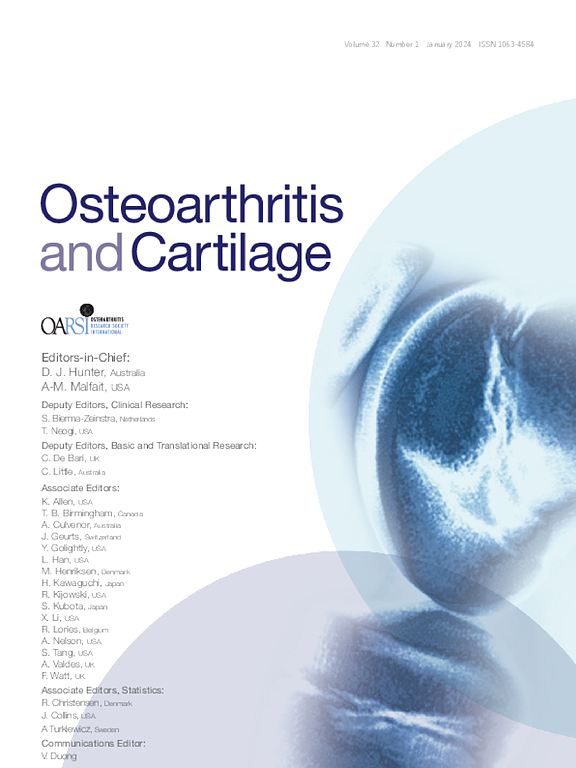用于关节软骨再生医学的可编程关节炎特异性受体
IF 7.2
2区 医学
Q1 ORTHOPEDICS
引用次数: 0
摘要
研究细胞疗法已被开发为治疗骨关节炎(OA)的疾病调节剂,包括那些诱导对驱动OA进展的炎症因子作出反应的药物。然而,失调的炎症级联反应并不特别表明OA的存在。在这里,我们部署了一个合成受体平台,以关节炎特异性方式调节细胞行为,将转基因表达限制在软骨变性部位。本文章由计算机程序翻译,如有差异,请以英文原文为准。
A programmable arthritis-specific receptor for guided articular cartilage regenerative medicine
Objective
Investigational cell therapies have been developed as disease-modifying agents for the treatment of osteoarthritis (OA), including those that inducibly respond to inflammatory factors driving OA progression. However, dysregulated inflammatory cascades do not specifically signify the presence of OA. Here, we deploy a synthetic receptor platform that regulates cell behaviors in an arthritis-specific fashion to confine transgene expression to sites of cartilage degeneration.
Design
A single-chain variable fragment specific for type II collagen (CII) that is exposed in damaged cartilage was used to produce a synthetic Notch (synNotch) receptor that enables “CII-synNotch” mesenchymal stromal cells (MSCs) to recognize degraded cartilage. Artificial signaling induced by both CII-treated culture surfaces and primary tissues was measured via fluorescence and luminescence assays. Separate studies measured the ability of CII-synNotch to govern cartilage anabolic activity of MSCs. Finally, a co-culture with ATDC5 chondrocytes was used to determine whether CII-synNotch MSCs can protect chondrocytes against deleterious effects of pro-inflammatory interleukin-1 in a CII-dependent manner.
Results
CII-synNotch MSCs are highly and selectively responsive to CII, but not type I collagen, as measured by luminescence assays, fluorescence microscopy, and concentrations of secreted transgene products in culture media. CII-synNotch cells exhibit the capacity to distinguish between healthy and damaged cartilage tissue and constrain transgene expression to regions of exposed CII fibers. Receptor-regulated production of cartilage anabolic and anti-inflammatory transgenes was effective to mediate cartilage regenerative functions.
Conclusion
This work demonstrates proof-of-concept that the synNotch platform guides MSCs for spatially regulated, disease-dependent delivery of OA-relevant biologic drugs.
求助全文
通过发布文献求助,成功后即可免费获取论文全文。
去求助
来源期刊

Osteoarthritis and Cartilage
医学-风湿病学
CiteScore
11.70
自引率
7.10%
发文量
802
审稿时长
52 days
期刊介绍:
Osteoarthritis and Cartilage is the official journal of the Osteoarthritis Research Society International.
It is an international, multidisciplinary journal that disseminates information for the many kinds of specialists and practitioners concerned with osteoarthritis.
 求助内容:
求助内容: 应助结果提醒方式:
应助结果提醒方式:


